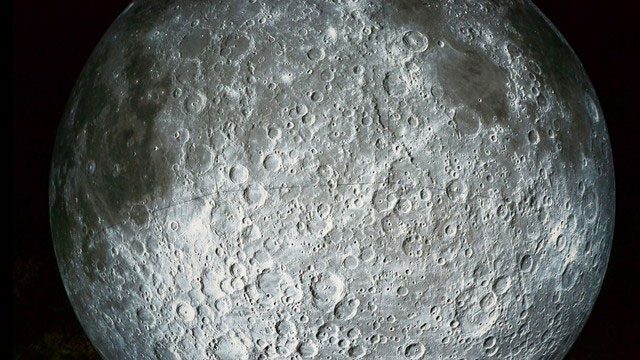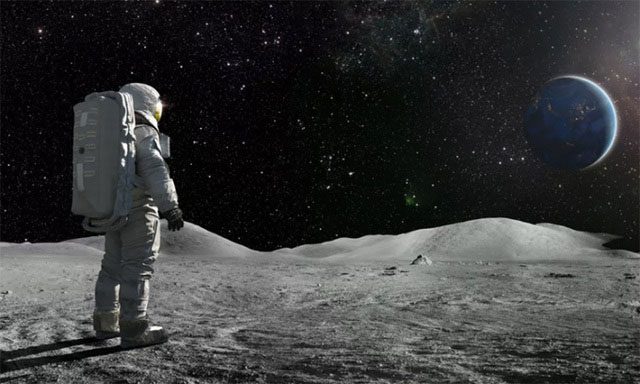If born on the Moon, humans would undergo significant changes. This is what scientists warn.
The Moon is the “promised land” that humanity aspires to conquer. Living on the Moon is not an easy feat. So, what would happen if humans were born on this celestial body?
According to scientists, the Moon’s gravity would make childbirth more challenging. Even during the fetal stage, humans would develop at a slower pace. Consequently, the duration of pregnancy on the Moon could be longer than on Earth. Imagine a pregnancy lasting about a year in space; childbirth would also take considerably longer compared to Earth.
Each month in space, a mother could lose about 1-2% of her bone density. This would significantly complicate childbirth and pose serious risks.

Giving birth on the Moon is not an easy task. (Photo: BI).
Due to the risk of pelvic fractures during childbirth, doctors assisting in deliveries in space would likely resort to cesarean sections. This method would ensure the safety of mothers giving birth on the Moon.
This creates the first differences between babies born on Earth and those on the Moon. Specifically, the heads of those born naturally on Earth have evolved to be small enough to pass through the birth canal. However, since there is no tradition of natural childbirth on the Moon, future Moon inhabitants might evolve. Their heads may be larger compared to their Earth counterparts. Children born on the Moon could even evolve to have different skin colors than those on Earth. This is because melanin in the skin helps protect humans from solar radiation. The darker the skin, the more layers of natural protection a person has.
Since the Moon lacks an atmosphere, humans will have significantly less protection from radiation. Therefore, the skin color of future Moon inhabitants may evolve to be darker to provide adequate protection.
However, as most of a Moon inhabitant’s life would be spent indoors or in protective suits, humans on this planet might evolve to have paler skin compared to those on Earth.
What challenges would humans face on the Moon?

To survive on the Moon, humans must overcome many harsh challenges. (Photo: Space).
The Moon’s surface is a difficult place to live. There is no atmosphere, no protection from solar radiation, and no means to maintain oxygen. People on the Moon’s surface could receive ionizing radiation doses over 400 times the safe limit, sufficient to be fatal within 10 hours, even while wearing a spacesuit.
As a result, humans may need robots and 3D printers to construct covered habitats on the Moon or prepare shelters in lava tubes formed from the Moon’s past.
However, how will humans sustain themselves? Initially, food would need to be transported from Earth. Living plants require greenhouse soil and air rich in CO2, a scarce gas on the Moon. However, this gas could be synthesized from recycled materials.
Moon residents would also have to exercise for hours each day to maintain bone and muscle mass. This is due to the Moon’s gravity being only 1/6 that of Earth. Thus, daily physical activity is essential for maintaining a healthy body.

To survive long-term on the Moon, humans need to overcome many challenges. (Photo: Peepo).
Experts indicate that the day-night cycle at most locations on the Moon’s surface includes 14 consecutive days of sunlight, followed by 14 days in darkness and extreme cold.
Due to the lack of atmosphere, temperatures on this planet can fluctuate from 120 degrees Celsius during the day to -180 degrees Celsius at night. Additionally, permanently shadowed regions (PSR) on the Moon can reach temperatures as low as -240 degrees Celsius.
These conditions create a harsh environment that future lunar explorations will face. The thermal control capabilities of lunar robots must be robust enough to survive the long, cold nights.
In fact, depressions located within PSRs are places shielded from sunlight and may contain water ice. Therefore, these could be ideal resources for generating oxygen, water, and rocket fuel. Although finding ways to live and work effectively on the Moon, especially in the South Pole with many PSRs, is not easy, experts are actively conducting research.
Scientist Dean Eppler at the Aerospace Corporation states that surviving the Moon’s night is not only crucial for the South Pole but also for all locations where humans wish to operate on this planet.
Experts in NASA’s Artemis program are currently trying to address issues related to survival during the night on the Moon. As a result, humans may find suitable solutions in the future.


















































